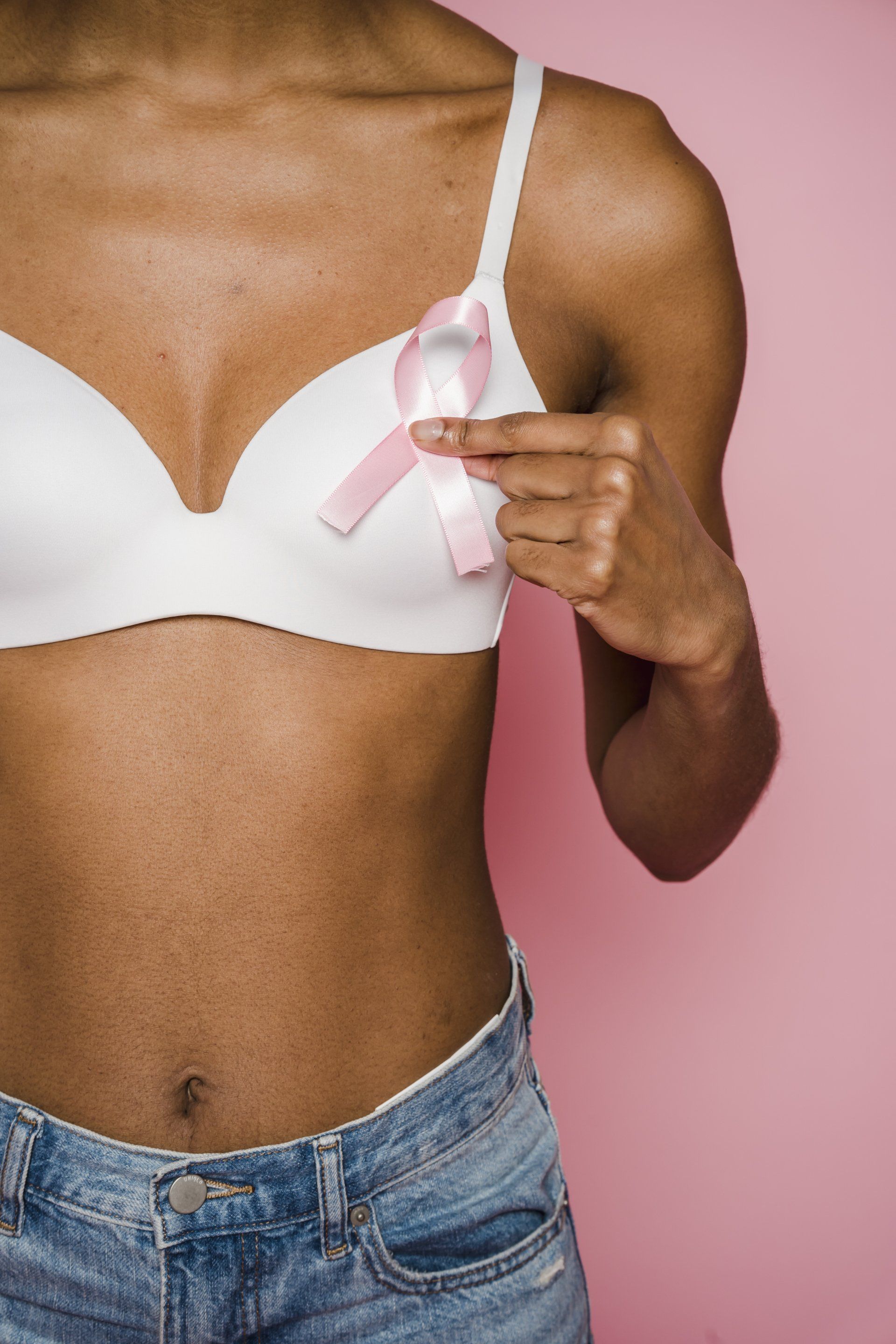Menopause Support Groups: How To Find The Right Community For You
Menopause may put an end to dreaded monthly periods, but it can cause a wide range of symptoms brought about by changing hormones.
With all the menopausal symptoms and bodily changes that come during this period, stress during menopause is inevitable, and that’s why menopausal women need to get their much-needed menopause support from the right community.
Keep on reading to ensure that you can get the right support or provide adequate support for a relative in menopause.
RELATED: Common Causes of Sagging Breasts and Tips for Prevention
What Is Menopause?
Menopause is a woman’s final menstruation period. You can tell you’ve had menopause if you haven’t had any bleeding, spotting, or staining for the past 12 months.
The years leading up to this period are called perimenopause or menopausal transition. During this period, the body’s female hormone levels—estrogen and progesterone-- fluctuate considerably.
These changes can significantly affect how your body functions, causing a wide range of menopause symptoms, including (but may not be limited to):
- vasomotor symptoms (hot flashes and night sweats)
- mood swings
- low libido
- weight gain
- bone loss
- loss of bladder control
- difficulty falling asleep
- vaginal dryness
- joint pains
- muscles aches
- itchy skin
This transition commonly occurs between 45 and 55 years of age (or a few years later or earlier), and may last for seven to 14 years.
The Importance of Finding the Right Community during Menopause
With all the menopause symptoms you’ll experience, menopause can be difficult. However, finding a peer group is one of the best ways to help you navigate these tough times.
The right support group can help you to:
- determine what to expect during the transition.
- explore and identify the best coping strategies.
- get firsthand information about the changes you’ll deal with.
- receive the emotional support you need to get through the transition.
- be with people with the same experiences and problems that you’re experiencing.
- gain access to a network of healthcare professionals and people with shared experiences.
- be prepared to manage and prevent potential complications and further health issues.
Having a peer group will make you feel less lonely or isolated. You’ll also get a better understanding of what you’re going through, giving you a sense of empowerment and control over your situation.
How to Find the Right Menopause Peer Group
The good news is there are plenty of menopause support groups to choose from, and each and every group has its specialization and advantages.
Here are some tips to ensure that you’ll find the right community for your needs:
1. Seek a Recommendation from Your Doctor or a Healthcare Professional
Your doctor is the best place to start when finding the right support group. With their vast network and understanding of your condition, they're the best ones to recommend which of the available support groups will best suit your needs.
If your doctor doesn’t have any recommendations, the next best thing you can do is check with the hospital staff or your local community healthcare center.
2. Ask Friends, Relatives, or Colleagues Who Are Also Undergoing Menopause
Since they already have firsthand experience joining support groups, other women can provide valuable insight into which peer group will be best for you.
3. Check Out the Websites of the Support Groups
Once you already have a list of the support groups near you, take the time to choose which group you wish to join. You can begin by checking out their websites, Facebook pages, or apps (if they have any).
4. Narrow Down Your Choices
Now that you have created a list of all the potential peer groups, it’s time to decide: Which support group should you join? Before you can determine this, you must consider the following factors first:
- People/Associations behind the Group
Who runs the group and what are their qualifications? The answer would either be a government healthcare organization, a non-profit organization, or a group of volunteers who have had the same experience as yours.
By identifying the people behind the group, you can know if they are qualified to give you reliable information and sound support.
In addition to their qualifications, you should also check out any religious or financial ties that they have which can influence their recommendations regarding treatments.
- Group Rules and Members
Examining the group rules and members and how they facilitate their sessions can help determine if the group suits your lifestyle and schedule.
Some of the considerations to keep in mind are:
- group’s criteria for members
- number of attendees per session
- time and duration of meetings
- location of the meetings
- meeting structure and expectations
- types of topics tackled in meetings
- confidentiality agreement
5. Attend One or Two Support Group Meetings
The best way to determine which peer group would be most suitable for you is to test the waters by attending one to two sessions. After the said sessions, ask yourself the following questions:
- Do I feel included and supported within the group?
- Do I feel safe and comfortable sharing my experiences with the group?
- Do I feel like the group respects my privacy and experiences?
- Do I feel better after the sessions?
- Am I getting good and useful information from the group?
- Is the group providing me with the emotional and educational support I need?
RELATED: 8 Ways To Stay Away From Dry Sensitive Skin
The Different Menopause Support Groups to Consider
To get you started on your road to finding the right menopause support group, here are some of the menopause support groups you may want to check out.
1. British Menopause Society
You won’t have the chance to speak with other women in this support group. However, the British Menopause Society website can provide you with almost all the answers to some of the most frequently asked questions about women’s health, early menopause, and many more menopause issues.
The website also provides access to menopause workshops, informative email newsletters, and a few downloadable guides. Finally, the website also has a function that can help you find a menopause specialist near your area.
2. North American Menopause Society
The North American Menopause Society aims to promote women’s health in midlife and beyond. They achieve this by providing many women and healthcare experts with reliable resources, educational videos, and fact-based information about menopause and its symptoms and potential complications.
3. Menopause Matters
If you’re looking for other women to share your experiences with, Menopause Matters is the website to visit. It’s one of the most popular online forums for discussing menopause, including hormone therapy, breast cancer, everyday health, treatment options, bone health, osteoporosis, and many more.
Providing Additional Support during Menopause
Let’s face it. Menopausal symptoms will make things difficult not only for menopausal women but also for their relatives and friends. Understanding the emotional and physical symptoms of menopause can equip you with everything you need to help her get through this challenging period. Here are some of the ways to do that:
1. Monitor Her Symptoms
Doing so can help you identify what steps or precautions you need to take to manage or minimize the effects of menopause on her daily life. The best way to do this is to keep a diary where you can write down all her symptoms and what time of the day it usually takes place.
2. Encourage Her to Practice Stress Management Techniques
There’s no doubt that the menopause period can be a challenging time for many women. To survive this period, the best thing you can do is to help her keep stress at bay. That’s why you should encourage her to perform relaxation activities like yoga, meditation, tai chi, or breathing exercises.
3. Make Sure She Gets a Well-Balanced Diet
To prepare her body for all the symptoms she might experience, make sure that she eats a well-balanced diet high in protein and fiber and low in carbs.
Additionally, you should limit her consumption of food that may worsen her symptoms—alcohol, caffeine, fatty foods, and many more.
Lastly, ensure that she gets the dietary support she needs through supplements.
One good example is Nutrametrix Prime Feminine Female Support Formula, formulated with different ingredients like Black Cohosh, Dong Quai, Wild Yam, Red Clover, Vitamin D, and many more. These ingredients alleviate menopause symptoms, reduce hot flashes, improve mood, and manage stress and anxiety.
The Bottom Line
With all the physical and emotional symptoms they experience, menopausal women may feel like they are on a roller coaster ride that they can’t easily get out of. That’s why it’s crucial now more than ever that they get the emotional support they need from relatives and friends.
Unfortunately, not everyone can understand what they are going through or have any idea on how to manage their symptoms properly. Luckily, many menopause support groups can provide them with everything they need to survive and even thrive during menopause.
Up Next:










